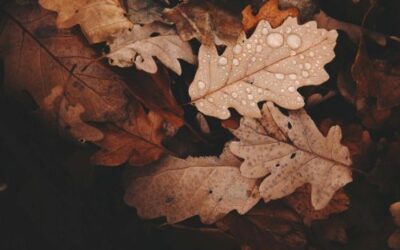If you want to have a vibrant, healthy lawn next spring and summer, fall is the time to prepare. Following this simple Fall Yard & Lawn Care Checklist will help you maintain your lawn during the colder months, so that come spring, it will look its best.
1. Rake Your Leaves
Though fall leaves are beautiful, they should be removed from your yard. A layer of fallen leaves on your lawn can actually keep your grass from getting the air and sunlight it needs. When this happens, it can lead to disease. Remove leaves with a rake or blower, at least once a week. Alternatively, you could use a mulching mower to mince the leaves up into small shreds, making them into beneficial compost for your grass.
2. Continue Mowing
It is important to continue mowing in the fall. If you allow your grass to grow too long before winter, it will be prone to snow mold. The closer it gets to the end of fall, the shorter you can cut your grass. You can drop your mower down and cut your grass 1 to 2 inches shorter than you have been cutting it during the growing season. Continue to mow your grass shorter until your grass stops growing in early winter, and enters dormancy. It is important to never cut off more than one-third of the lawn at once.
3. Fertilize
It is important to fertilize your yard in the fall, in order to have a healthy lawn come spring. Fall fertilizer is also called “winterizer” and it is a vital component of good lawn care. Fertilization provides needed nutrients for your lawn to store for use in the winter. Even though your lawn becomes dormant in the winter, the roots continue to grow during this time. Fertilizing your lawn during this dormant season allows for optimal root development throughout winter and into early spring. By nourishing your grass in the winter, you will be ahead of the game when spring rolls around.
4. Keep Weeding
Weed control is generally thought of as a spring lawn care task but in truth, it is important in fall lawn care, too. During the fall, weeds send nutrients to their root zone. So when spraying weeds early in the fall, the weed killer will more deeply penetrate the roots and this will make it more likely that the entire weed will be killed.
5. Test Your Soil
Fall soil testing will help you to manage your lawn’s soil pH and nutrition. Fall is the perfect time to test, because you will have plenty of time to restore balance to soil pH by spring. It is recommended to test healthy lawns every 3-4 years, but problem areas should be tested every year.
6. Aerate and Overseed
Aeration involves making holes throughout your lawn that allow water, nutrients, and oxygen to penetrate the soil. After aerating, overseed your lawn. Fall conditions are perfect for cool-season grass seed germination. Overseeding thin lawns in the fall will pay off with thick, lush grass in the grass. Overseed at least 45 days before the anticipated first frost, so the grass will be established before harsh conditions hit.
Following this Fall Yard and Lawn Care Checklist in the fall can help best prepare your yard for spring lawn care. To help get your yard in the best shape possible this fall, give us a call at Jack’s Lawn Care & Landscaping. We can help you set a game plan for your lawn, and be the envy of the neighborhood come spring.



